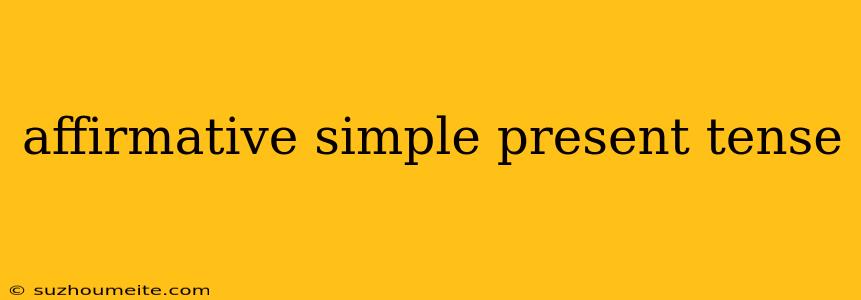Affirmative Simple Present Tense
The simple present tense is one of the most basic tenses in English. It is used to describe habits, routines, facts, and general truths.
How to form the affirmative simple present tense:
The affirmative simple present tense is formed by using the base form of the verb (the infinitive without "to"). For third-person singular subjects (he, she, it), we add "-s" or "-es" to the verb.
Here is a table illustrating the formation:
| Subject | Verb | Example |
|---|---|---|
| I | play | I play tennis every Saturday. |
| You | play | You play the guitar very well. |
| He | plays | He plays basketball every day. |
| She | plays | She plays the piano beautifully. |
| It | plays | It plays a soothing melody. |
| We | play | We play video games together. |
| You | play | You play soccer with your friends. |
| They | play | They play board games on weekends. |
Uses of the affirmative simple present tense:
1. Expressing habits and routines:
- I wake up at 7:00 am every morning.
- She goes to the gym three times a week.
- They eat lunch at 12:00 pm every day.
2. Describing facts and general truths:
- The sun rises in the east.
- Water boils at 100 degrees Celsius.
- Dogs are mammals.
3. Expressing current states and actions:
- I live in Jakarta.
- She works as a doctor.
- He drives a red car.
4. Describing scheduled events:
- The train leaves at 8:00 am.
- The movie starts at 7:00 pm.
5. Expressing opinions and beliefs:
- I believe that everyone deserves a chance.
- She thinks that the weather is beautiful today.
Examples of sentences in affirmative simple present tense:
- He reads a book every night.
- They work in a big company.
- The cat sleeps in the sun.
- Water freezes at 0 degrees Celsius.
- I love to eat pizza.
Note:
-
For verbs that end in "o", "s", "x", "ch", or "sh", add "-es" to the third-person singular form.
- Example: go becomes goes, watch becomes watches
-
For verbs that end in a consonant followed by a "y", remove the "y" and add "-ies".
- Example: study becomes studies, fly becomes flies
The affirmative simple present tense is a vital part of English grammar and is used frequently in everyday conversations and writing. Understanding how to use it correctly is essential for speaking and writing fluently.
